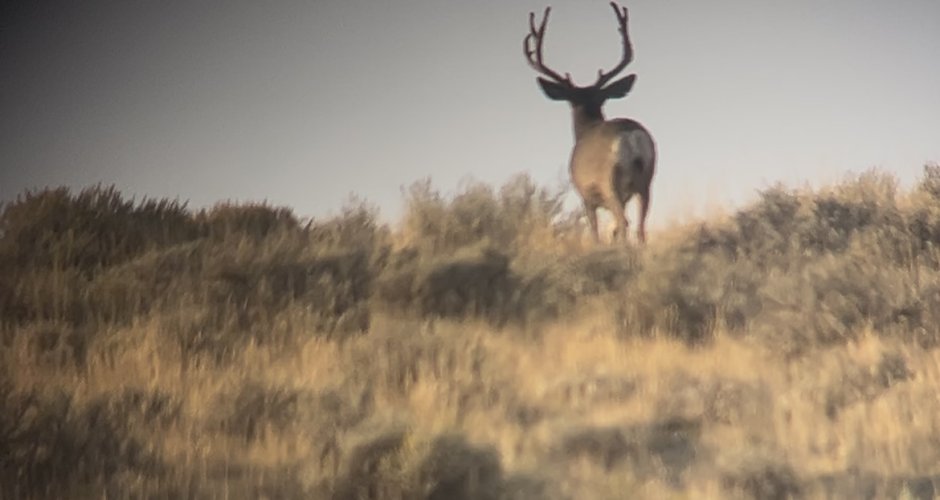Nameless Range
Well-known member
The saying "You should not pass on the first day what you would be happy to shoot on the last" is something I've heard since I was old enough to hunt. That said, it is not rational, and assumes a static threshold for satisfaction during a hunt, ignoring how rational decision-making adjusts in response to dwindling time and updated expectations based on what a hunter thinks may be possible with what time is left. This is my attempt of a refutation at the old adage.
Rational Adjustment Over Time
A hunter has a personal satisfaction threshold for the buck size they desire (B). As the hunt progresses and days are used up, let us assume that the probability of encountering a buck larger than (B) decreases. Therefore, the optimal threshold (B) may(satisfaction is subjective) lower as time runs out, reflecting the collision of a desire to harvest any buck that meets minimum satisfaction, rather than holding out for a more ideal specimen.
Formally
Let:
On day 1, you’d set a high threshold STST because the chance of future opportunities is high:
ST=argmaxx[p(x∣T)⋅U(x)]ST=argmaxx[p(x∣T)⋅U(x)]
Each day that passes, if no suitable buck is encountered, you’d recalculate:
St−1=argmaxx[p(x∣t−1)⋅U(x)]St−1=argmaxx[p(x∣t−1)⋅U(x)]
Another way to look at it: Suppose a hunter has 5 days to hunt. In this hunt, a hunter’s baseline is to harvest a buck of at least size XX, but on earlier days, passes on smaller bucks as large as or even larger than XX, hoping for a bigger one. The expected benefit of waiting is high when 5 days remain, but drops some with each unused day. On the last day, the desire to not go home empty-handed increases, rationalizing shooting a buck of a caliber previously passed.
In conclusion, the saying, "You should not pass on the first day what you would be happy to shoot on the last", makes the mistake of treating all days equally. This ignores Bayesian probability, opportunity cost, and the dynamics of satisfaction - none of which are fixed over time.

Rational Adjustment Over Time
A hunter has a personal satisfaction threshold for the buck size they desire (B). As the hunt progresses and days are used up, let us assume that the probability of encountering a buck larger than (B) decreases. Therefore, the optimal threshold (B) may(satisfaction is subjective) lower as time runs out, reflecting the collision of a desire to harvest any buck that meets minimum satisfaction, rather than holding out for a more ideal specimen.
Formally
Let:
- TT = Total days to hunt
- tt = Days remaining (so tt runs from TT down to 1)
- StSt = Satisfaction threshold on day tt
- p(x∣t)p(x∣t) = Probability of seeing a buck of size xx or better with tt days left
- U(x)U(x) = Utility (happiness) the hunter receives from shooting a buck of size xx
On day 1, you’d set a high threshold STST because the chance of future opportunities is high:
ST=argmaxx[p(x∣T)⋅U(x)]ST=argmaxx[p(x∣T)⋅U(x)]
Each day that passes, if no suitable buck is encountered, you’d recalculate:
St−1=argmaxx[p(x∣t−1)⋅U(x)]St−1=argmaxx[p(x∣t−1)⋅U(x)]
Another way to look at it: Suppose a hunter has 5 days to hunt. In this hunt, a hunter’s baseline is to harvest a buck of at least size XX, but on earlier days, passes on smaller bucks as large as or even larger than XX, hoping for a bigger one. The expected benefit of waiting is high when 5 days remain, but drops some with each unused day. On the last day, the desire to not go home empty-handed increases, rationalizing shooting a buck of a caliber previously passed.
In conclusion, the saying, "You should not pass on the first day what you would be happy to shoot on the last", makes the mistake of treating all days equally. This ignores Bayesian probability, opportunity cost, and the dynamics of satisfaction - none of which are fixed over time.






